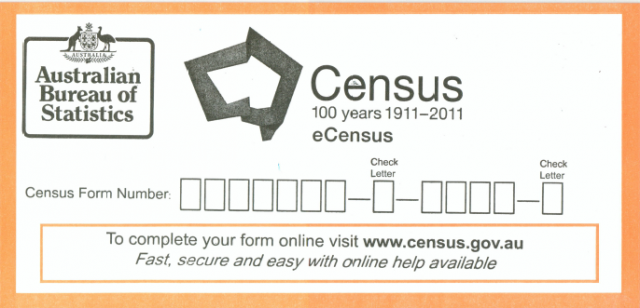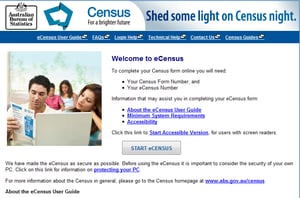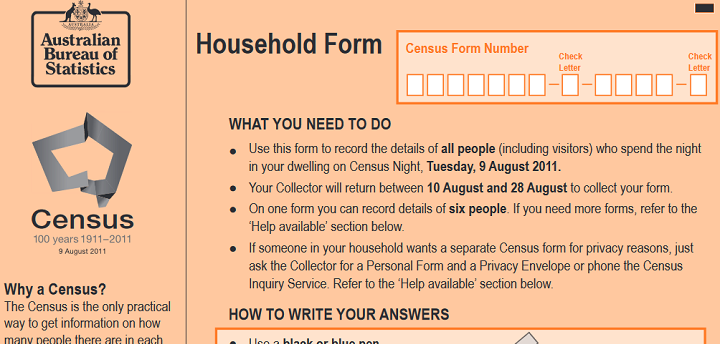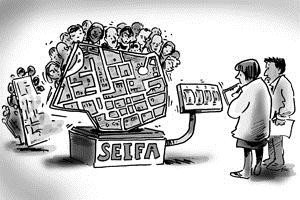For the 2011 Census, the ABS is promoting and recommending the eCensus – the option for all households to complete a Census form on the Internet. eCensus was offered in 2006 but not heavily promoted. We look at how this works and the benefits of doing it this way, and a little of the technology which sits behind it.

Please note that this is not the 2011 Australian eCensus website. To fill in your Census form online you will need an eCensus envelope delivered by your Census Collector, and then go to www.census.gov.au. This blog contains information and a discussion about the eCensus only. If you’d like to read more about what the eCensus is, read on. To complete your eCensus form you will need to go to the Census website. .id is not directly affiliated with the Census and is not able to offer advice on filling out your form.
In 2006, the ABS trialled an electronic version of the Census available on the Internet, known as the eCensus. It wasn’t widely advertised, but all households were given an eCensus envelope with a code to enable them to complete their form online. A total of 10% of Australian households filled in their Census online, and the success of the trial has led ABS to expand the option for 2011.
For this Census, eCensus is the preferred method of filling in your Census form. Census Collectors are required to offer the eCensus at the doorstep first, and if a householder agrees to do the eCensus, they won’t receive a paper household form at all. Just a little eCensus envelope with a code in it, as well as their Census Guide flyer. This code needs to be combined with the Census Form Number provided by the collector which will give each household a unique online identifier to log in to the eCensus.

The eCensus 2011 login screen
The eCensus opened to the public on July 28th, and you can fill in your Census form from when you have it delivered. As it is meant to be filled in on Census day itself, one of the useful features is that you can log in earlier, and complete the form, save a complete or partially completed form and return to it, so you could fill in all your details, and just log in on Census night or the day after to amend anything that has changed and sign it off.
I completed the eCensus in 2006, and it was a breeze to use. There are some very clear advantages to using it.
For the householder:
- It steps you through the form, skipping questions that don’t apply to that person (eg. employment/income questions for under 15s).
- There are options for screen reader software for the visually impaired.
- You won’t need to arrange a time for the collector to return to collect your form.
- If you are in a large household, you can fit up to 10 people on the eCensus, compared to just 6 on the household form – so there is no need to ask for additional forms.
- Privacy – the collector doesn’t see any of your details, and if you want to keep your details private from others in the household (eg. house sharing arrangements), you can request extra eCensus envelopes and enter your details individually – it all gets combined back together as a household in automated processing.
For the Census collector:
- The collector receives a message (usually by SMS) when a form is returned by eCensus, and doesn’t have to return to that dwelling.
- There are less paper forms to collect, so less weight to carry around in that satchel.
- It’s much more secure, with less possibility of forms being lost.
For the ABS and data users:
- The eCensus will tell you if you’ve missed a question and prompt you to go back and fill it in – except for the Religion question which is optional. This should lead to better data quality, with less “Not Stated” responses.
- The forms don’t need to be scanned in so scanning errors are eliminated.
- Data processing should also be faster as the scanning step is removed.
IBM are managing the eCensus and have designed the system to handle half the Australian population (that’s more than 4 million households) logging in simultaneously. Because Census is conducted on a single night, the system must be able to handle an extremely high peak usage. It is being opened over the whole delivery and collection period to spread the load, but the peak load will be on August 9th.
The system uses the strongest publicly available encryption technology to protect individuals’ confidential data (128 bit SSL), but of course users need to keep their eCensus code secure (they are delivered in little perforated envelopes like your bank PIN). If you are comfortable doing your banking online, you should be comfortable using the eCensus.
Even if you’re not going to be at home on Census night, you can fill in your eCensus from your hotel or other non-private dwelling. People staying in these establishments will get the green eCensus envelope, while households get the orange one.
Here is some info on the eCensus from the ABS, which covers some other interesting facts about the eCensus. They’ve also made a video with the head of Census, Paul Lowe, talking about the eCensus.
ABS thinks that 30% of households will take up the eCensus in 2011, which would be three times the rate of 2006, but there is no limit to how many people can use it and I’m sure they’d be happy if that figure went higher. My household will be doing our form online again, will you?
.id is a team of population experts who combine online tools and consulting services to help local governments and organisations decide where and when to locate their facilities and services, to meet the needs of changing populations. Access our free demographic resources and tools here.











